Distributed Energy

What role do renewable energy sources play in distributed energy systems ?
Renewable energy sources are crucial for distributed energy systems due to their clean, sustainable nature and local generation capabilities. They reduce carbon emissions, enhance energy security, promote local economic development, improve energy efficiency, and enable innovation in these systems.

How do distributed energy systems impact the environment ?
Distributed energy systems, characterized by their clean and efficient nature, play a crucial role in modern energy systems. These systems primarily utilize renewable energy sources such as solar, wind, and biomass, and are typically located near energy consumers. This not only reduces transmission losses but also enhances the overall efficiency of energy utilization. The impact of distributed energy systems on the environment can be broadly categorized into the following key points: 1. **Reducing Greenhouse Gas Emissions** - **Decrease Fossil Fuel Dependence**: Distributed energy systems often use renewable energy sources, reducing the need for fossil fuels and thereby decreasing greenhouse gas emissions associated with traditional power generation. - **Promote Energy Diversification**: By combining various renewable sources, these systems help diversify energy production, further mitigating the environmental impact of energy reliance on any single source. 2. **Enhancing Energy Utilization Efficiency** - **Decentralized Production**: Producing energy closer to where it is consumed reduces transmission losses that occur in centralized power systems. - **Combined Heat Power**: Some distributed systems employ combined heat and power (CHP) technology, which can achieve higher energy efficiency rates, up to 80%-90%, compared to traditional methods. 3. **Mitigating Environmental Pollution** - **Reduction in Exhaust Emissions**: Renewable distributed energy sources like solar and wind inherently produce no emissions, significantly reducing air pollution compared to fossil fuel combustion. - **Minimizing Water Pollution**: Unlike some large-scale hydroelectric projects, distributed renewable sources have a minimal impact on water ecosystems and do not introduce pollutants into water bodies. 4. **Promoting Sustainable Development** - **Sustainable Resource Cycles**: Distributed systems often incorporate local energy cycles, promoting sustainable resource use and management at a community level. - **Eco-friendly Infrastructure**: The infrastructure required for distributed energy systems, such as solar panels and wind turbines, has a relatively lower environmental footprint compared to traditional power plants. 5. **Improving Ecological Biodiversity** - **Land Use Impact**: Distributed energy projects generally require less land compared to large-scale power plants, thus having a reduced impact on habitats and biodiversity. - **Habitat Preservation**: The decentralized nature of these systems allows for easier integration into existing environments without significantly disrupting ecological balance. 6. **Increasing Systemic Resilience** - **Disaster Response**: Decentralized energy systems can continue to operate even when the main grid fails, enhancing community resilience during natural disasters or other crises. - **Grid Stability**: Distributed energy resources can help stabilize the electrical grid by providing localized load balancing and peak shaving functions. 7. **Supporting Policy and Regulations** - **Policy Driving Forces**: Many governments encourage the development of distributed energy through favorable policies, aiming to reduce carbon emissions and promote sustainable development. - **Regulatory Frameworks**: Comprehensive regulatory frameworks ensure that the development of distributed energy aligns with environmental protection and sustainability goals. Additionally, while distributed energy systems offer numerous environmental benefits, careful planning and implementation are necessary to maximize their positive impacts. For instance, the extraction and processing of materials for solar panels and wind turbines can have environmental costs, necessitating strict oversight and environmentally friendly practices. Moreover, integrating distributed energy effectively into existing energy frameworks requires advanced grid management technologies and innovative market mechanisms.

How do distributed energy systems contribute to energy efficiency and sustainability ?
Distributed energy systems (DES) play a significant role in improving energy efficiency and sustainability. DES refers to a comprehensive energy utilization system located near the end-users, which can operate independently or in conjunction with the grid. It encompasses various technologies such as combined heat and power (CHP), renewable energy, energy storage, and fuel cells. Here is a detailed exploration of how distributed energy systems contribute to energy efficiency and sustainability: 1. **High Energy Efficiency** - **Combined Heat and Power (CHP)**: CHP systems generate both electricity and heat simultaneously, providing an overall efficiency of up to 80%-90%. This is considerably higher than traditional centralized power plants, which typically have an efficiency of around 40% for advanced coal-fired power plants. - **Energy Cascade Utilization**: Distributed energy systems utilize energy cascading, where the byproducts of one process are used as inputs for another. For example, waste heat from electricity generation is used for heating or cooling, maximizing energy utilization. - **Reduced Transmission Losses**: Due to their proximity to consumers, DES reduces the need for long-distance transmission of electricity, thereby minimizing transmission losses compared to centralized power systems. 2. **Environmental Protection** - **Low Emissions**: Distributed energy systems often use clean energy sources like natural gas, solar, and wind, which have lower emissions compared to traditional coal or oil combustion. - **Renewable Energy Integration**: Distributed energy systems can easily integrate renewable energy sources like solar panels and wind turbines, promoting the use of sustainable energy. - **Waste Reduction**: By using waste heat and integrating multiple forms of energy production, DES helps reduce energy waste and its associated environmental impact. 3. **Economic Benefits** - **Cost Savings**: Distributed energy systems can reduce energy costs by decreasing transmission and distribution expenses. They also provide more stable energy prices compared to fluctuating grid rates. - **Infrastructure Investment Reduction**: Since DES requires less infrastructure compared to large-scale power plants and transmission networks, it can lead to significant cost savings in infrastructure investment. - **Market Potential**: The development of DES has opened up new markets and business opportunities, especially in the sale and maintenance of distributed energy equipment. 4. **Enhanced Reliability and Resilience** - **Decentralized Architecture**: The decentralized nature of DES means that if one system fails, others can still operate, ensuring continuous energy supply. - **Storm and Disaster Resilience**: During large-scale disasters or extreme weather events, DES can serve as a crucial energy source when centralized power systems fail. 5. **Promotion of Smart Grid Development** - **Integration with Smart Grids**: Distributed energy systems can be integrated with smart grids, enabling two-way flows of electricity and information, which enhances overall grid efficiency and responsiveness. - **Demand Response Management**: DES allows for better demand response management, where consumption can be adjusted based on real-time supply and demand conditions, further enhancing energy efficiency. Additionally, there are several challenges and considerations for the widespread adoption of distributed energy systems: - **Technical Challenges**: The integration of multiple energy sources requires advanced technical expertise and sophisticated control systems. - **Policy Support**: While policies increasingly support DES, more comprehensive regulations and incentives are needed to encourage wider adoption. - **Economic Viability**: Although DES offers economic benefits, the initial investment can be high, which may limit access for some users. In summary, distributed energy systems contribute significantly to energy efficiency and sustainability through high energy utilization efficiency, environmental protection, economic benefits, enhanced reliability and resilience, and promotion of smart grid development. Despite certain challenges, the advantages of DES make it a critical component of future energy strategies.
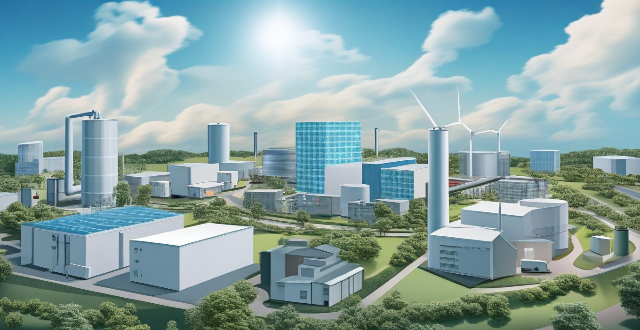
What are the benefits of using a distributed energy system ?
Distributed energy systems (DES) have become increasingly popular due to their numerous benefits. These systems can include solar panels, wind turbines, micro-hydro plants, and other renewable energy sources. The key benefits of using a distributed energy system are increased energy efficiency, lower energy costs, improved reliability and resilience, environmental sustainability, encouragement of local economy and job creation, promotion of energy independence and security, and flexibility and scalability. Adopting a distributed energy system brings numerous benefits ranging from increased efficiency and cost savings to improved reliability, environmental sustainability, economic development, and energy security.
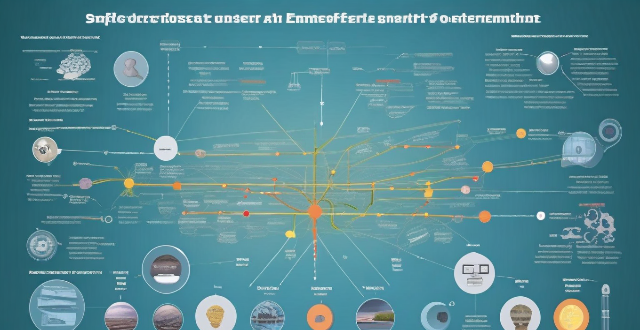
What are the costs associated with implementing a distributed energy system ?
This article discusses the different types of costs associated with implementing a distributed energy system, including initial investment costs, operational costs, and energy costs. It also emphasizes the importance of carefully considering these costs before making any decisions about whether or not to invest in such a system.
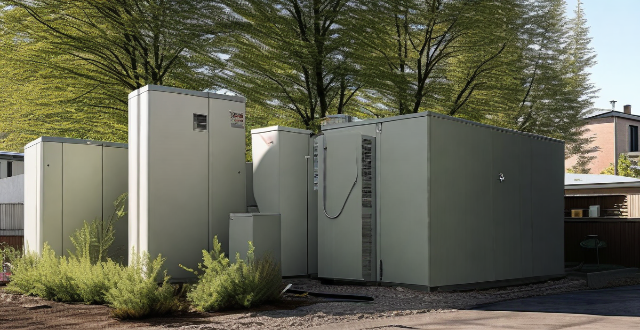
What is a distributed energy system ?
Distributed energy systems (DES) are integrated systems that generate, store, and manage energy near the point of consumption. They typically include renewable energy sources, energy storage devices, and control systems. The primary goal is to optimize energy production and consumption while minimizing environmental impact and enhancing energy security. Key features of DES include decentralized generation, renewable energy sources, energy storage, intelligent control systems, flexibility, and scalability. Benefits of DES include increased energy efficiency, improved reliability, reduced environmental impact, enhanced energy independence, and cost savings. Examples of DES include residential solar PV systems, commercial buildings with cogeneration, microgrids, and community energy projects.

How does a distributed energy system work ?
A distributed energy system (DES) is a decentralized approach to power generation and distribution that utilizes renewable energy sources, energy storage devices, and smart grid technologies. The system works by generating electricity locally from renewable sources, storing excess energy for later use, and distributing power efficiently within a local area. This setup enhances efficiency, reliability, and sustainability while potentially reducing costs. DESs offer flexibility and adaptability to changing energy needs and technological advancements, positioning them as a crucial element in the future of energy infrastructure.
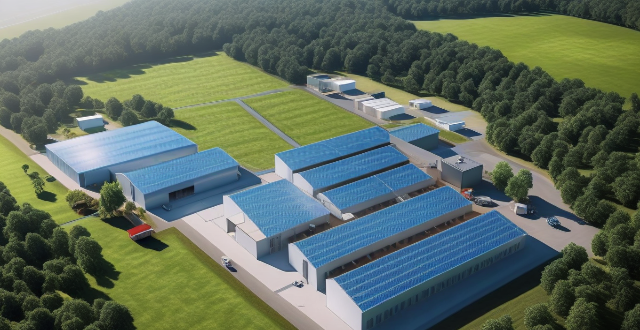
What are some examples of distributed energy systems ?
Distributed energy systems (DES) are small-scale power generation units located close to end-users, offering benefits like increased energy efficiency and reduced environmental impact. Examples include solar PV systems, wind turbines, fuel cells, and microgrids. These systems can operate independently or connect to the main power grid. Solar PV systems convert sunlight into electricity using silicon cells, while wind turbines harness wind's kinetic energy. Fuel cells generate electricity through a chemical reaction of hydrogen and oxygen. Microgrids are localized groups of interconnected loads and distributed energy resources that can operate independently from the main power grid. DES contribute to a more sustainable future by improving energy efficiency, reducing environmental impact, and enhancing electricity supply reliability.

What are some potential challenges and drawbacks of distributed energy systems ?
Distributed energy systems (DES) offer benefits such as increased energy independence and reduced carbon emissions, but they also present several challenges. These include interconnection issues with the power grid, reliability concerns due to weather dependency and storage limitations, high upfront costs, complex permitting processes, operation and maintenance expenses, environmental impacts from resource extraction and waste management, potential job losses in traditional energy sectors, and shifts in energy market dynamics. Addressing these challenges requires technological innovation, policy development, and consumer education.

In what ways can energy storage solutions improve grid stability and reliability ?
Energy storage solutions play a crucial role in enhancing grid stability and reliability. They contribute to balancing supply and demand, providing ancillary services, integrating renewables, improving resilience, optimizing economic efficiency, facilitating distributed generation, and supporting transmission and distribution systems. Energy storage systems can absorb excess energy during low demand periods and release it during peak times, helping to level the load on the grid. They also provide frequency regulation and voltage support, smoothing out the variability of renewable sources like wind and solar. Energy storage enhances resilience by providing blackstart capability and islanding, allowing parts of the grid to be isolated and continue supplying power in case of major faults. It optimizes economic efficiency by enabling arbitrage and deferring costly grid upgrades. Energy storage facilitates distributed generation by allowing consumers with distributed generation to store energy during off-peak hours and use it during peak time periods, reducing their electricity bills. Overall, energy storage solutions are becoming increasingly vital for modernizing and strengthening our electrical grids.

How can I install a distributed energy system in my home or business ?
Installing a Distributed Energy System (DES) in your home or business can significantly reduce reliance on the grid and provide financial savings. The process involves assessing energy needs, site evaluation, financial analysis, system design, permitting, installation, and maintenance. Choosing the right technology, sizing the system appropriately, and selecting quality equipment with certified installers are crucial steps. Permitting includes checking local regulations and coordinating with the utility for interconnection. Installation involves mounting equipment, electrical connections, and system checks. Maintenance ensures optimal performance through cleaning, inspections, and performance tracking. This investment requires careful planning but offers substantial rewards.

What are some examples of successful clean energy investments ?
Investing in clean energy is becoming increasingly popular due to rising awareness of the need for sustainability. Successful investments include solar power, wind power, geothermal energy, hydroelectric power, bioenergy, electric vehicles, energy efficiency measures, and smart grid technology. These investments not only combat climate change but also create new economic opportunities and jobs.

How is digital technology transforming the energy market ?
Digital technology is revolutionizing the energy market by improving efficiency, enhancing renewable energy sources, facilitating decentralized energy production, enabling smart buildings and homes, and promoting transparency and accountability. This transformation is crucial for meeting the increasing global demand for energy while addressing environmental concerns.

How do smart grids help in achieving better energy efficiency ?
Smart grids, through their advanced digital communication technology, play a pivotal role in enhancing energy efficiency. They achieve this by optimizing power generation and distribution, managing energy consumption effectively, improving system reliability, encouraging sustainable practices, and leveraging data analytics. Features like demand response, distributed generation, smart meters, load balancing, peak shaving, self-healing capabilities, predictive maintenance, dynamic pricing, and electric vehicle integration contribute to these efficiency improvements. As we move towards a more connected future, smart grids will continue to drive efforts towards a more energy-efficient global landscape.

How do virtual power plants utilizing renewable energy affect grid stability and management ?
**The Impact of Virtual Power Plants Utilizing Renewable Energy on Grid Stability and Management** Virtual power plants (VPPs) aggregate various renewable energy resources to optimize electricity production and supply, enhancing grid stability and management. They balance supply and demand, reduce transmission losses, and enhance reliability by integrating distributed energy resources into a controllable network. VPPs offer operational flexibility, optimize resources, integrate electric vehicles, and facilitate energy trading. However, they also pose challenges such as complexity in management, interoperability issues, security concerns, and the need for regulatory adaptation. Overall, VPPs utilizing renewable energy sources have a profound effect on grid stability and management, offering enhanced reliability, efficiency, and flexibility, but require careful planning and adaptation to fully realize their potential.

What are the latest trends in smart grid technology to integrate renewable energy sources more effectively ?
The article discusses the latest trends in smart grid technology that are facilitating the integration of renewable energy sources into power systems. These trends include distributed energy resource management through microgrids and virtual power plants, advanced predictive analytics and machine learning for weather and load forecasting, various energy storage technologies like battery storage, pumped hydro storage, and flow batteries, smart infrastructure and automation involving smart meters and grid automation, electric vehicles participating in demand response programs and vehicle-to-grid technology, and blockchain applications for peer-to-peer trading and transactive energy systems. Collectively, these advancements aim to create a cleaner, more sustainable, and resilient energy system.

How can Smart Grid Technology improve energy efficiency ?
Smart grid technology is transforming the energy sector by integrating advanced communication technologies, automated controls, and innovative sensors to create a more efficient, reliable, and sustainable energy system. Key features of smart grid technology include Advanced Metering Infrastructure (AMI), Distributed Energy Resources (DERs), Demand Response (DR) Programs, and Electric Vehicles (EVs). The benefits of smart grid technology on energy efficiency include improved load management through peak shaving, demand side management, and dynamic pricing; increased renewable energy integration through microgrids, grid balancing, and energy storage systems; optimized transmission and distribution through self-healing networks, predictive maintenance, and reduced transmission losses; and enhanced customer engagement and participation through consumer education, incentives for energy efficiency, and community solar programs. Overall, smart grid technology offers numerous opportunities to improve energy efficiency across various sectors of the energy industry while transitioning towards a more sustainable future with reliable and efficient energy delivery for all consumers.

What is the current state of renewable energy research and development ?
Renewable energy research and development (R&D) is a rapidly evolving field that aims to create sustainable alternatives to traditional fossil fuels. The current state of renewable energy R&D can be characterized by several key trends: ### **Advances in Technology** - Solar energy research focuses on improving the efficiency of photovoltaic cells and concentrated solar power systems. - Wind energy technology is advancing with the development of offshore wind turbines and material innovations for turbine blades. - Hydropower research explores ways to harness energy from small streams and rivers without ecological harm, as well as improvements to pumped storage systems. - Geothermal energy is expanding beyond natural hotspots through enhanced geothermal systems and binary cycle power plants. ### **Integration with Grid Systems** - Smart grids enable better management of consumer demand and integrate distributed energy resources like rooftop solar panels and small wind turbines. - Energy storage solutions, such as battery technologies and pumped hydro storage, are being refined for improved efficiency and environmental impact. ### **Policy and Economic Drivers** - Government incentives like tax credits and feed-in tariffs encourage renewable energy adoption. - Carbon pricing mechanisms, including emissions trading schemes and carbon taxes, create financial incentives for companies to reduce their greenhouse gas emissions. ### **Environmental Impact and Sustainability** - Lifecycle analysis examines the manufacturing processes and end-of-life management of renewable energy equipment to minimize environmental footprint. - Biodiversity conservation efforts aim to mitigate the impact of renewable energy infrastructure on wildlife habitats and ecosystems. As technological innovation, grid integration advancements, supportive policies, and consideration for environmental impact continue, renewable energy is expected to play an increasingly vital role in global energy supply while helping to mitigate climate change.
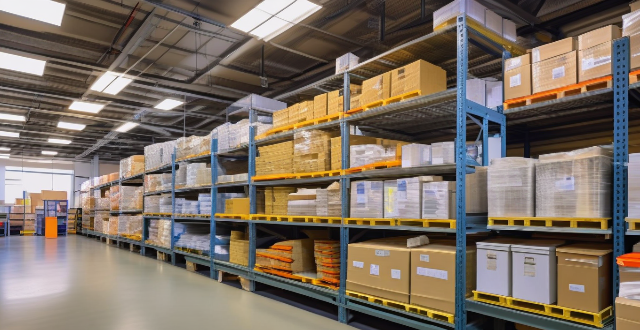
How can energy storage be integrated with smart grid technologies ?
Energy storage plays a pivotal role in the development and operation of smart grids. It provides flexibility to the system, enabling it to manage variable renewable energy sources, enhance reliability, and improve efficiency. The benefits of energy storage in smart grids include balancing supply and demand, integrating renewable energy, improving grid stability and reliability, enhancing efficiency, and saving costs. Methods of integration include distributed energy resource management (DERMS), advanced metering infrastructure (AMI), grid optimization software, and energy management systems (EMS). However, challenges such as interoperability, cybersecurity, regulation and standardization, and cost must be addressed. Integrating energy storage with smart grid technologies is crucial for achieving a modernized, efficient, and sustainable electrical grid.

What are the benefits of using sustainable energy sources ?
Using sustainable energy sources provides environmental, economic, and social benefits. These include reduced greenhouse gas emissions, improved air quality, conservation of natural resources, protection of ecosystems, cost savings, job creation, energy independence, stable energy prices, improved public health, community resilience, education and innovation, and increased energy access. Transitioning to sustainable energy is essential for our future prosperity and survival.

What are the key considerations for integrating renewable energy sources into urban designs ?
Key considerations for integrating renewable energy sources into urban designs include assessing available renewable energy sources, prioritizing energy efficiency, ensuring grid connectivity, involving the community, and considering financial viability.

What challenges does the Clean Energy Revolution face in the future ?
The clean energy revolution is a global effort to transition from fossil fuels to renewable energy sources. This transition faces several challenges in the future, including technical, economic, social, and political factors. Some of these challenges include developing efficient and cost-effective energy storage solutions, upgrading existing grid infrastructure, high upfront costs for renewable energy infrastructure compared to traditional fossil fuel plants, job displacement in industries traditionally reliant on fossil fuels, raising public awareness about the benefits of clean energy, ensuring that clean energy benefits are distributed equitably across different socioeconomic groups and regions, consistent and long-term policy support, coordinated international efforts to tackle global climate change effectively, establishing stringent environmental standards and regulations, and proper planning and allocation of resources for infrastructure projects related to clean energy. Addressing these challenges will require concerted efforts from various stakeholders including governments, industry leaders, researchers, and the general public.

What are the benefits of the Clean Energy Revolution ?
The Clean Energy Revolution is a significant transformation that brings numerous benefits, including a healthier environment and population, economic growth and sustainability, enhanced energy security and efficiency, and innovation and technological progress. It reduces pollution and improves public health, creates jobs and opportunities, makes energy more secure and efficient, and fosters international cooperation and technological advancements. The revolution promises a more sustainable and equitable world for humanity to thrive in without compromising the planet's health.

How can wind energy contribute to a sustainable future ?
Wind energy is a renewable and sustainable source of power that can significantly contribute to a more sustainable future. It offers several benefits including reducing carbon emissions, stimulating economic growth, enhancing energy security, driving technological innovation, compatible land use, community engagement, scalability, improving health impacts, and promoting education and awareness. By incorporating wind energy into our energy mix, we can create a cleaner, healthier, and more sustainable environment for future generations.

How does renewable energy contribute to reducing carbon emissions ?
Renewable energy is crucial for mitigating climate change by reducing carbon emissions. It displaces fossil fuels, lowers emissions intensity, improves energy efficiency, and reduces system leaks. Benefits include mitigating climate change, improving air quality, and offering economic advantages such as job creation and savings on fuel costs.

How does Smart Grid Technology work ?
Smart grid technology is a modernized electrical grid that uses digital communication technologies to optimize the delivery of electricity. It integrates advanced metering infrastructure, distributed energy resources, and communication networks to detect and react to changes in the power system. The key components of smart grid technology include advanced metering infrastructure (AMI), distributed energy resources (DERs), and communication networks. The benefits of smart grid technology include improved reliability, enhanced efficiency, increased resilience, better integration of renewable energy, and consumer empowerment. By optimizing the distribution of electricity based on demand patterns and available resources, smart grids reduce energy losses and improve overall efficiency. Distributed energy resources provide backup power during outages or extreme weather events, making the grid more resilient to disruptions. With real-time access to their energy usage data, consumers can make informed decisions about their energy consumption and potentially save money on their bills.

What role does technology play in ensuring a continuous supply of sustainable energy ?
The text discusses the pivotal role of technology in securing a consistent supply of sustainable energy. It highlights how technology enhances efficiency, reduces costs, mitigates environmental impacts, boosts energy security, and fosters innovation and job creation in the renewable energy sector.

How does clean energy investment compare to traditional energy investment ?
Investing in energy sources is crucial for the development and growth of any economy. However, the choice between clean energy investment and traditional energy investment has become a significant topic of discussion in recent years. This comparison will explore the differences between these two types of investments, focusing on their costs, benefits, and potential impacts on the environment and society.

How do renewable energy sources contribute to industrial energy efficiency improvements ?
Renewable energy sources like solar, wind, hydropower, biomass, and geothermal power play a crucial role in enhancing industrial energy efficiency. They offer benefits such as reduced greenhouse gas emissions, lower operating costs, and increased reliability. By adopting these technologies, businesses can reduce their reliance on fossil fuels, increase energy independence, and contribute to a more sustainable future.

How are vaccines distributed globally ?
The global distribution of vaccines is a complex process involving various stakeholders, including governments, international organizations, pharmaceutical companies, and healthcare providers. The article discusses the different aspects of vaccine distribution worldwide, highlighting the challenges and opportunities in this critical field. It covers topics such as manufacturing and production, regulatory approval and licensing, international collaboration and partnerships, funding and financing mechanisms, logistics and delivery, administration and coverage, and more. By addressing these challenges proactively and leveraging available opportunities, we can work towards achieving equitable access to vaccines for all populations worldwide.